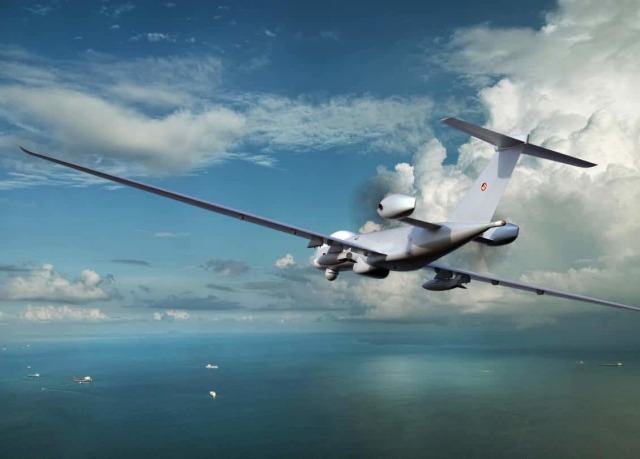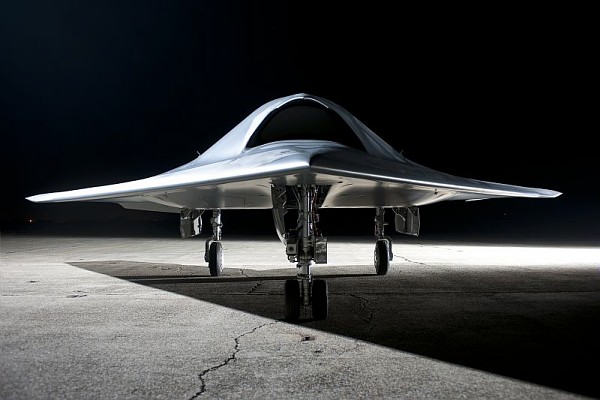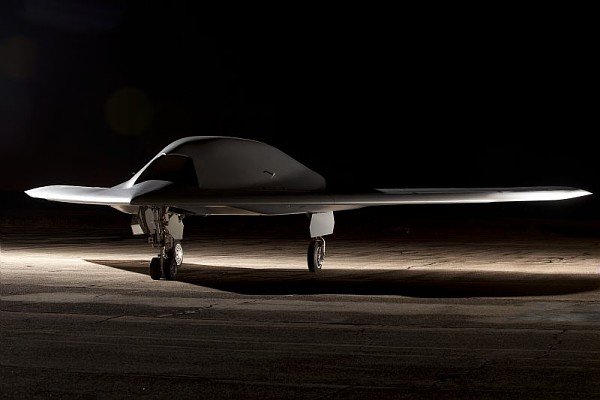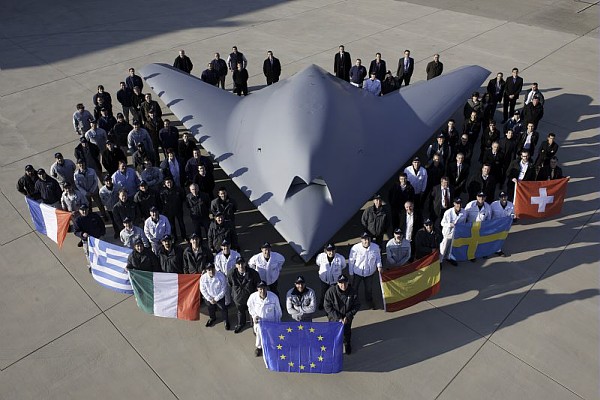In size and weight, it is seriously larger than the Su-25, and a number of layout solutions look unusual. The project differs sharply from the Russian S-70 Hunter heavy drone: this is probably due to the fact that European manufacturers, unlike domestic ones, do not plan to use the novelty in the enemy air defense zone. . But the new combat drone will be involved in patrolling over urban areas of Germany.
At the ILA 2022 air show in Berlin, the European concern Airbus presented the general appearance of the projected Eurodrone heavy drone, and showed the weapons intended for use on it. Its role is played by Hellfire missiles and guided Paveway laser-guided bombs. This is a rather unusual solution, because the Eurodrone does not look like a low-visibility aircraft. In combination with its large size and weight (wingspan — 26 meters, length — 16 meters, weight — up to 11 tons), it should be expected that it will be vulnerable to air defense.
Hellfire missiles of the types deployed today have a range of no more than 11 kilometers, and Paveway bombs should be used from even smaller distances. It turns out that in order to defeat the Eurodrone enemy, it is necessary to approach it noticeably closer than the radius of defeat of the "Torus" (16 kilometers) or the "Shell-C1" (20 kilometers). The flight ceiling of the new car is 13.7 kilometers, which is less than the high—altitude reach of the Pantsir-S1 (16 kilometers), although slightly more than that of the Tor (12 kilometers).
Meanwhile, both of these complexes effectively hit even the much less radio-noticeable Bayraktar. It is not entirely clear exactly how Eurodrone will be able to hit its targets in such a situation.
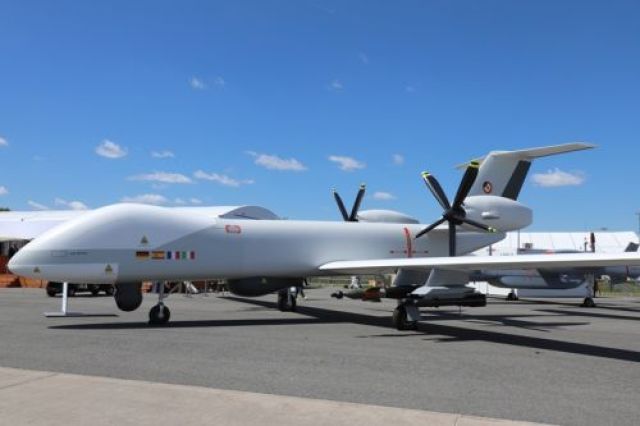
Judging by the time since the beginning of R&D, the ILA 2022 presented at the exhibition is still only a mock-up, although it is quite worked out
Image source: Wikimedia Commons
A possible reason for the bright non—modernity of the capabilities of the new drone is the date when its creation was conceived. Airbus signed a contract with European government agencies to create the device on February 24 this year, while still being influenced by previous ideas about the tasks facing Western strike drones. For wars like the Afghan or Iraqi, vulnerability to serious air defense was irrelevant, since the population of countries where Western armed forces were fighting had practically no such air defense.
But Eurodrone has a serious mass of combat load — 2300 kilograms. Theoretically, this allows over time to adapt to it not only the "short-armed" Hellfire, but also cruise missiles of the Norwegian NSM type with a range of up to 190 kilometers. In this case, even such a large and radio-visible device as a new drone will have chances to be used in combat operations without immediate defeat by the enemy.
The Airbus contract for the creation of a new machine implies its flight readiness by 2027-2028. The cost of the agreement is 7.1 billion euros; the number of cars that the manufacturer must build is 21 pieces. The price also includes ground control stations for drones (at least seven), so it would be incorrect to say that they cost more than a third of a billion euros apiece.
A certain "anti-partisan" orientation of the structure attracts attention. Its speed is 500 kilometers per hour, two turboprop engines with pulling screws give the device the appearance of an ordinary aircraft. It should also be close to him in terms of radio visibility.
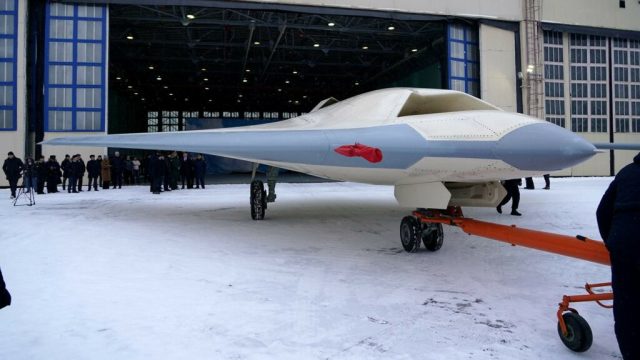
The S-70 is hardly noticeable not only in terms of external forms: its weapons are supposed to be used from internal compartments (which also reduces radio visibility), unified with the Su-57
Image source: Wikimedia Commons
For comparison: the Russian heavy drone S-70 "Hunter" (first flight — 2019) is noticeably more compact than the Eurodrone (wingspan — 19 meters), has a slightly larger combat load (2.8 tons), a ceiling of 18 kilometers and a maximum speed of at least 1000 kilometers per hour. At the same time, the device is clearly optimized in terms of forms to achieve minimal radio visibility. Among the weapons of the Hunter are cruise missiles of considerable range.
The Eurodrone project has already been seriously criticized in the EU countries. But, oddly enough, not at all in the sense of a limited range of weapons or insufficient stealth. Apparently, questions of this kind have not yet been raised, since European armies do not yet plan to participate in wars with a serious enemy, and where the enemy is unarmed in the air, similar machines will descend. In addition, the German authorities challenges.fr/entreprise/defense/crash-en-vue-pour-le-futur-drone-europeen_661643 " target="_blank" rel="nofollow">plan to use it to monitor urban neighborhoods in your country: it is clear that keeping such diverse requirements in mind, it is quite difficult to create an inconspicuous combat vehicle.
But critics of the new car in the EU note that such a take-off weight excludes its operation from field airfields. In addition, it will be too expensive to export to other countries.
